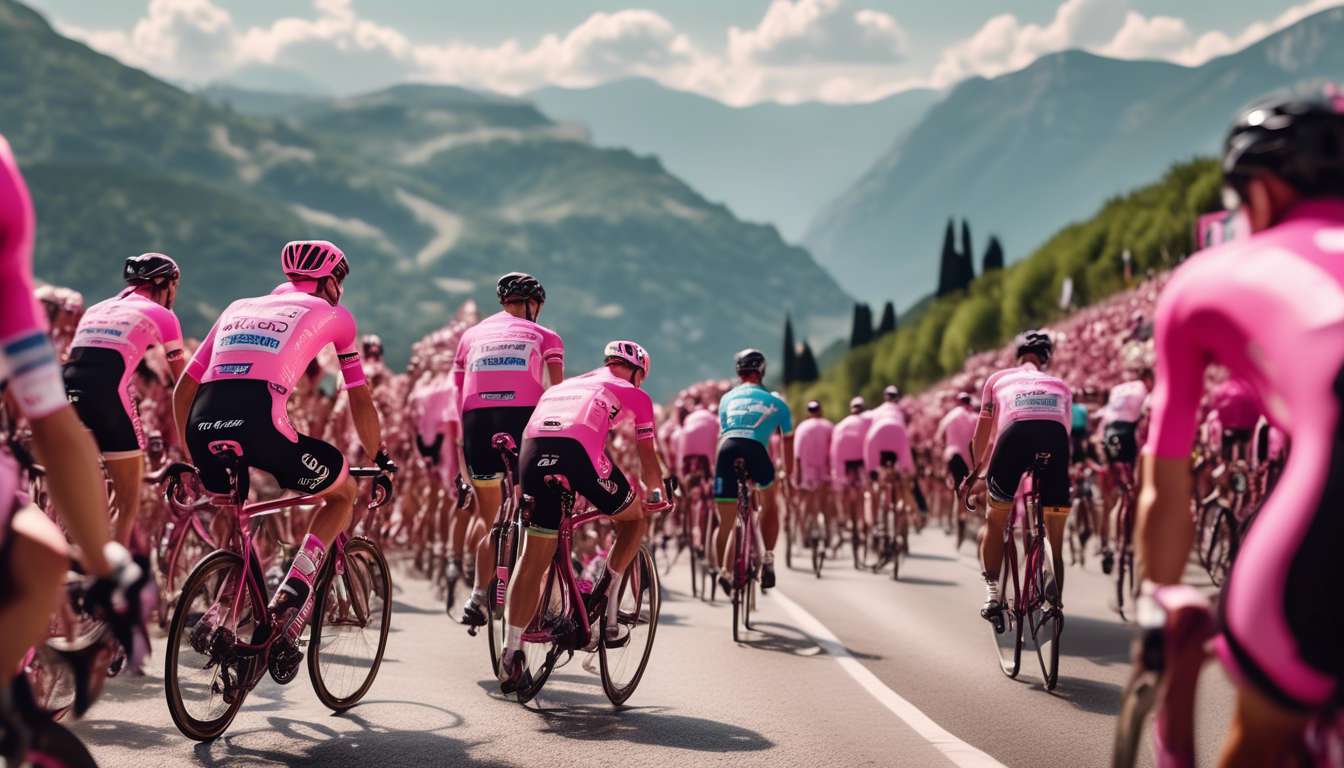As serious cycling admirers, we find ourselves constantly drawn to the thrilling legacy of the Tour de France, the world’s most prestigious cycling race. With its rich history spanning over a century, the Tour has captivated audiences with tales of triumph, endurance, and even controversy.
Together, we embark on a journey to unravel the fascinating stories that have shaped this iconic event. In exploring six pivotal questions, we aim to shed light on the Tour’s evolution, its most memorable moments, and the athletes who have left an indelible mark on its storied path.
From its inception in 1903 to the modern-day spectacle it has become, the Tour de France is not just a testament to athletic prowess but a celebration of human spirit and determination.
Join us as we delve into the heart of this legendary race, revisiting its glorious past and uncovering the narratives that continue to inspire us all.
Origins of the Tour de France
The Tour de France began in 1903 as a bold initiative by the newspaper L’Auto to boost its circulation and popularity. We might imagine ourselves gathered around, eager to witness this extraordinary cycling event that would soon capture the hearts of many.
The race wasn’t just about pedaling across the picturesque landscapes of France; it was about creating a community, a shared experience of excitement and challenge.
Back then, cycling was gaining momentum, and the idea of a grand tour was revolutionary. We can picture ourselves as part of this budding history, where the Tour de France quickly became more than just a race—it was a symbol of endurance, camaraderie, and national pride.
Riders embarked on grueling journeys, and we, as spectators, were united in awe and admiration.
The origins of the Tour de France remind us of a time when a simple idea blossomed into a historic tradition, drawing us into a shared passion for cycling and adventure.
Impact of World Wars
The World Wars profoundly disrupted the Tour de France, forcing us to pause and reflect on its resilience and ability to adapt in times of global turmoil. During these challenging periods, cycling enthusiasts worldwide experienced the absence of this cherished event, uniting us in a shared longing for its return.
The Tour de France, a symbol of camaraderie and competition, was canceled:
- From 1915 to 1918 during World War I
- Again from 1940 to 1946 due to World War II
These interruptions in its history remind us of the deep connections we share as fans and participants. Our collective anticipation for the race’s revival after each war underscored our commitment to preserving its legacy.
When the Tour finally resumed, it emerged stronger, embodying the spirit of perseverance. Through these trials, we witnessed the ability of cycling as a sport to bring us together and create a sense of belonging across borders and generations.
Legendary Tour de France Winners
Among the pantheon of cycling legends, a select few Tour de France winners have captivated our imaginations with their remarkable feats and enduring legacies. We find ourselves inspired by their tenacity, strength, and the sheer willpower that propels them through the grueling race. These cyclists aren’t just athletes; they’re icons in the rich history of the Tour de France, each leaving an indelible mark on the world of cycling.
Eddy Merckx, known as “The Cannibal,” exemplifies dominance with his five Tour victories.
Miguel Induráin mesmerized us with his unprecedented five consecutive wins.
Their stories are more than statistics; they bind us in a shared admiration for human endurance.
Lance Armstrong, despite the controversy surrounding his titles, is a name we can’t ignore when discussing the sport’s most talked-about figures.
In celebrating these legends, we, as cycling enthusiasts, are reminded of the unity and passion that the Tour de France brings to our community.
Evolution of Race Routes
Over the years, race routes have transformed to challenge riders with varied terrains and breathtaking landscapes. In the early days of the Tour de France, the routes were relatively straightforward, focusing primarily on long distances.
As cycling evolved, so did the race, integrating tougher climbs and diverse paths that test the limits of even the most seasoned athletes.
Together, we’ve marveled at the inclusion of iconic mountains like Alpe d’Huez and Mont Ventoux, which have become legendary in Tour de France history. These challenging ascents not only elevate the physical demands but also enhance the spectacle for us, the passionate audience.
We’ve seen the race evolve to reflect a deeper connection with its rich history and the diverse geography of France. By embracing change and innovation, the Tour de France continues to captivate our hearts, uniting us in admiration for the remarkable endurance and spirit of cycling.
Here, we find a community bound by a love for this storied race.
Controversies and Scandals
Throughout its storied history, the Tour de France has faced numerous controversies and scandals that have tested its integrity. As cycling enthusiasts, we share a deep connection to this iconic race, yet the shadows of doping scandals have at times marred its reputation.
These controversies remind us of the high stakes in this grueling competition. From the early whispers of performance-enhancing substances to the infamous revelations about Lance Armstrong, the Tour de France’s history is peppered with tales that challenge our faith in fair play.
Together, we’ve grappled with the impact of these scandals on our beloved sport. They’ve sparked debates, leading to:
- Rigorous testing protocols
- A renewed commitment to clean racing
We understand that maintaining the race’s integrity is essential to preserving our passion and trust.
As fans and followers of cycling, we continue to hope for a future where the Tour de France is celebrated for its triumphs, not overshadowed by controversy.
Technological Innovations in Cycling
In recent years, we’ve witnessed remarkable technological advancements transforming the way cyclists train, compete, and enhance performance. As fans of the Tour de France and cycling enthusiasts, we can appreciate how these innovations enrich our experience of the sport we love. From aerodynamic bikes to smart wearables, technology has redefined what’s possible on the road.
Cyclists now use data-driven tools to optimize their training and strategy, making every pedal stroke more efficient. Power meters and GPS devices allow us to gain insights into rider performance and race dynamics. With cutting-edge materials, bicycles are lighter yet more robust, enabling faster speeds and improved handling.
History shows us that the Tour de France has always been about pushing boundaries, and these innovations are no exception. As we cheer on our favorite riders, we’re not just spectators; we’re part of a community embracing change and evolution. Together, we celebrate how technology continues to shape the iconic race we cherish.
Iconic Tour de France Moments
Throughout its storied past, we’ve witnessed unforgettable moments that have defined the spirit and drama of the Tour de France. These events in cycling history unite us, creating a shared admiration for endurance and perseverance.
Key Moments in Tour de France History:
-
1967 Mont Ventoux Stage:
- Tom Simpson’s push to the limits of human endurance.
- His tragic determination serves as a reminder of the fine line between ambition and risk in cycling.
-
1989 Thrilling Finish:
- Greg LeMond’s eight-second victory over Laurent Fignon in the final stage.
- Remains the closest finish in the history of the Tour de France.
- A testament to skill, strategy, and resilience.
-
2001 Alpe d’Huez Ascent:
- Lance Armstrong’s iconic climb.
- Showcased the sheer power and determination cycling demands, despite later controversies.
These iconic moments bring us together, celebrating the shared history of triumphs and tribulations that define the Tour de France.
Legacy of the Tour de France
Few sporting events capture the imagination and endurance of athletes like the Tour de France, leaving a lasting impact on both cycling and global sports culture. This iconic race has woven itself into the fabric of our collective history, inspiring countless cyclists and fans worldwide. The Tour de France isn’t just a race; it’s a celebration of resilience, strategy, and pure human spirit.
As we delve into its legacy, we see how the Tour has elevated cycling to new heights, becoming a symbol of excellence and determination. For over a century, its challenging routes have tested the limits of human endurance, creating legends and unforgettable moments.
The Tour de France:
- Unites communities
- Draws people together
- Inspires a shared passion for the sport
The Tour de France continues to write history, influencing future generations of cyclists and enthusiasts. We’re part of a tradition that pushes boundaries, fostering a sense of belonging in the world of cycling.
How has the Tour de France influenced the popularity of cycling globally?
The Tour de France has played a pivotal role in elevating the popularity of cycling worldwide. Its thrilling races and iconic stages have captivated audiences, inspiring many to take up cycling as a hobby or sport.
The event’s rich history and tradition have made it a cornerstone of cycling culture, uniting enthusiasts globally. Through its international appeal and competitive spirit, the Tour de France continues to shape the landscape of cycling and fuel its growth.
What role does nutrition and diet play in a cyclist’s performance during the Tour de France?
Nutrition and Diet for Cyclists’ Performance
Nutrition and diet are crucial for a cyclist’s performance during the Tour de France. We focus on consuming the right balance of:
- Carbohydrates
- Proteins
- Fats
These nutrients fuel our bodies for the intense physical demands of the race.
Hydration
Hydration is also key. Ensuring we stay properly fueled and hydrated is essential for peak performance.
Personalized Meal Plans
Our team works closely with nutritionists to create personalized meal plans. These plans are designed to:
- Optimize our energy levels
- Enhance recovery throughout the grueling race
How do weather conditions affect the race and the cyclists’ strategies throughout the Tour de France?
Weather conditions have a huge impact on the Tour de France.
Rain, wind, or extreme heat can change the race dynamics and force us to adjust our strategies on the fly.
When dealing with hot weather:
- We need to stay hydrated.
- We must find ways to keep cool.
Rainy conditions:
- Make the roads slippery.
- Increase the danger factor.
Strong winds:
- Can break up the peloton.
Adapting to these conditions is crucial for our success in this grueling race.
Conclusion
In conclusion, you’ve explored the rich history of the Tour de France, from its origins to legendary winners, controversies, and technological advancements.
The race’s enduring legacy continues to captivate fans worldwide, showcasing the grit, determination, and sportsmanship of cyclists.
As you reflect on iconic moments and consider the evolution of this historic event, remember the Tour de France’s lasting impact on the sport of cycling and its place in sporting history.




